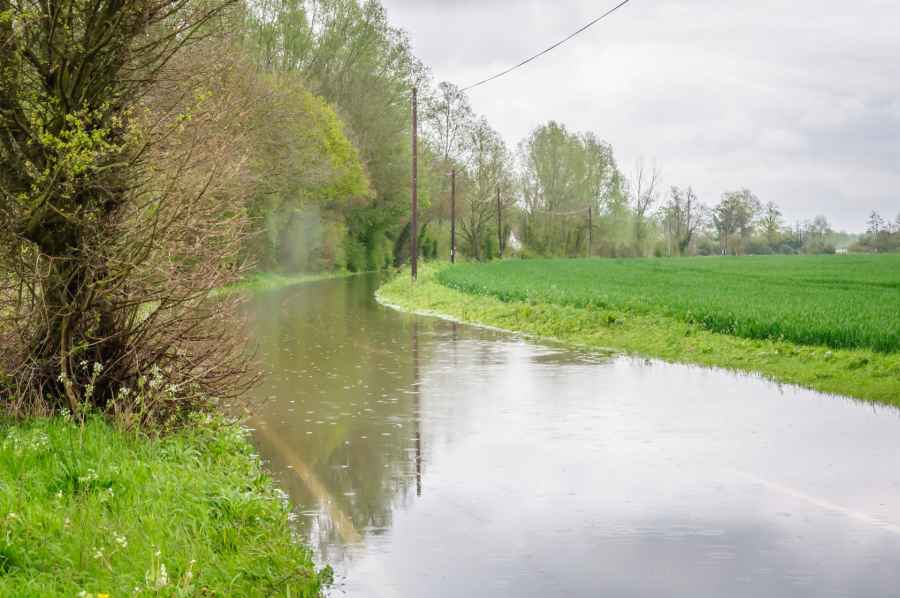
Assessing the sward, soil and infrastructure after flooding will be key to getting grazing and silage areas growing in 2016, says AHDB Beef & Lamb.
Assess the sward
Flood events exhibit significant amounts of stress on pasture plants. The force of the water and the debris it carries will damage above-ground vegetation while oxygen starvation will damage soil roots and plant growth.
Once an area is flooded, much of the air space in the soil is replaced with water. Ryegrass plants are typically thought to survive for 10 to 14 days under standing water conditions, after which both roots and leaf will begin to die off. In contrast, plants submerged under flowing water can survive longer as moving water tends to contain more oxygen, some of which will diffuse into the soil.
Once flood water has receded and it is safe to do so, walk the pastures to assess the level of sown species which remain. If there is less than 60% of sown species in the sward, reseeding is required. For guidance see the BRP manual Improving pastures for Better Returns and the Recommended grass and clover list.
Be mindful of sediment deposits on the sward. If these are more than 5cm deep it is unlikely the ryegrass will push through. A set of chain harrows could be used to break up these deposits if ground conditions are suitable.
Soil test
Add any flooded areas to the list of fields to be soil sampled this spring. Sediments carried by flood waters can be a lucky dip. Fine silt and clay deposits can often be rich in nutrients, however sediments can also carry trace elements and heavy metals which can cause problems. In addition, readily mobile nutrients such as nitrogen and sulphur will have been leached from the soil profile, leaving plants devoid of nutrients for the growing season. More information on soil testing can be found in the BRP manual Managing nutrients for Better Returns.
Evaluate soil structure
Flooding can cause a range of physical, biological and chemical changes within the soil, all of which can effect soil structure. For example swelling of soil particles, dilution of the soil solution and a reduction in friction between particles all cause soil aggregates to disperse, damaging soil structure.
Although many of these changes will begin to reverse once the soil begins to dry out, it is important to assess soil structure on any flooded fields before grazing or travelling with machinery. Soil structural assessment can be done with the AHDB Healthy Grassland Soils scoring sheet.
Review infrastructure
Flooding events can cause widespread damage to grazing infrastructure and often leave behind a range of debris on farmland. Once the water has subsided and it is safe to do so, walk the grazing and silage platforms to remove any debris. This will avoid any possible injury to animals and foreign objects ending up in silage.
Untreated wood and plant debris can be gathered and burned on farm. If there is significant gravel or sand deposits which have come from further up the catchment, these can be piled and stored for use on the farm. Make sure you have the appropriate waste exemptions from the Environment Agency.
Watch out for weeds
Flood waters can introduce new weed species to pastures. Thin, slow-recovering pastures and bare soils will provide a good opportunity for weeds to generate. Carefully monitor pastures throughout the spring and tackle any weeds before they seed to avoid long-term weed infestations. For further information see the BRP manual Improving pastures for Better Returns and the Grassland weed control guide.
Grants are available to farmers in Cumbria, Northumberland, Lancashire and Yorkshire to help restore flooded areas. The Farming Recovery Fund offers funding for infrastructure repairs, e.g. fencing materials or gates, and for cultivation activity, e.g. reseeding or sward lifting, on damaged land.
